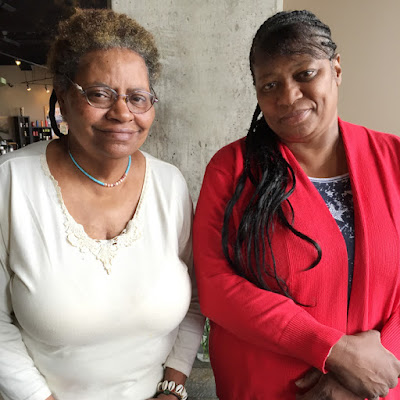I could be in any church for any occasion, but a whiff of bees wax candles, or the spicy scent of incense calls up memories of Holy Rosary Church during Holy Week. My recollections are of the days before Vatican II, of Latin hymns, Tantum Ergo and Panis Angelicus. It is the Globeville neighborhood of that era that is etched in my memory: still intact, neat as a model train layout with small homes, tidy yards, barns and sheds, steeples and smokestacks.
What triggers a memory of the neighborhood for you? The sound of a trail whistle? The smell of the stockyards? A snapshot of the family home? History Colorado wants to hear reminiscences of both long-time and new residents of the Globeville-Elyria-Swansea Neighborhoods.
History Colorado uses site-based remembering techniques to jump-start writing and storytelling that reanimates the community history of a place. Neighbors write stories of resilience and community connection that forge stronger identities.
Wednesdays, September 26, October 3 and October 10
6:30 - 8:30 pm, Swansea Recreation Center
2650 East 49th Avenue
Denver, CO 80216
Call 303-866-4584 to schedule a time
What to Bring:
Pen, paper, an object of importance from your neighborhood/community,
lots of memories, family and friends!
A culminating Community Exhibit will take place on November 15th from 6–8 pm.
¡COMPARTE TU HISTORIA!
History Colorado presenta el
Proyecto Recuerdos de los Barrios: Globeville-Elyria-Swansea
El Proyecto Recuerdos de los Barrios es un programa de narración de historias que se centra en los residentes antiguos y actuales de barrios específicos. Empleamos técnicas de reminiscencia basadas en el sitio con el fin de estimular escritos y narraciones que reanimen la historia de la comunidad. Los vecinos escriben historias de resiliencia y conexión comunitaria que sirven para reforzar su identidad.
Qué traer:
Bolígrafo, papel, un objeto de importancia de su barrio/comunidad,
muchos recuerdos, ¡Familia y Amigos!
Finalizaremos con una Exposición de la Comunidad el 15 de Noviembre de 6–8 pm.
Miercoles 6:30–8:30 pm
Swansea Recreation Center • 2650 E. 49th Ave, • Denver, CO 80216
September 26, October 3 y October 10
303-866-4584
Holy Rosary Church ® Mary Lou Egan
Intact 4500 block of Sherman Street before I-70
® Mary Lou Egan











